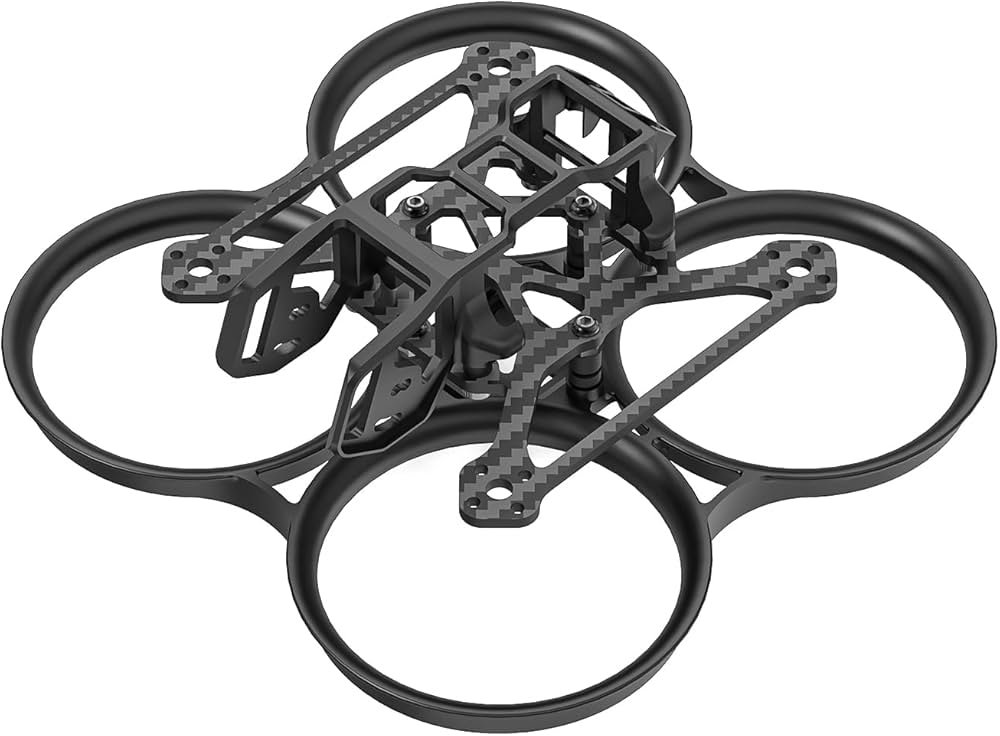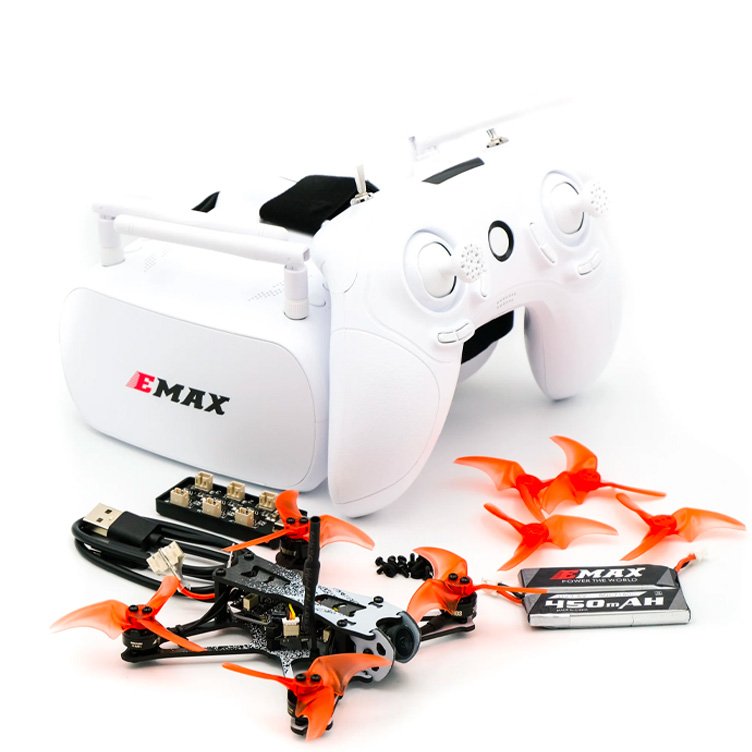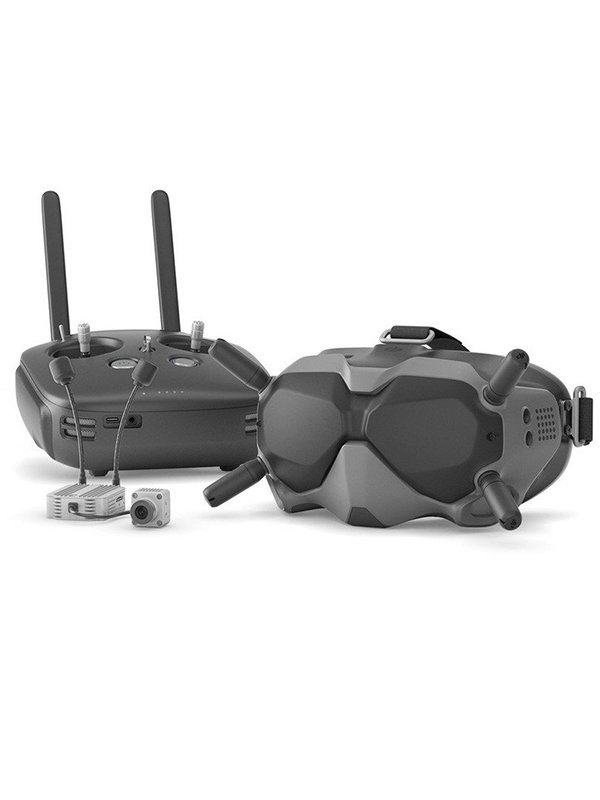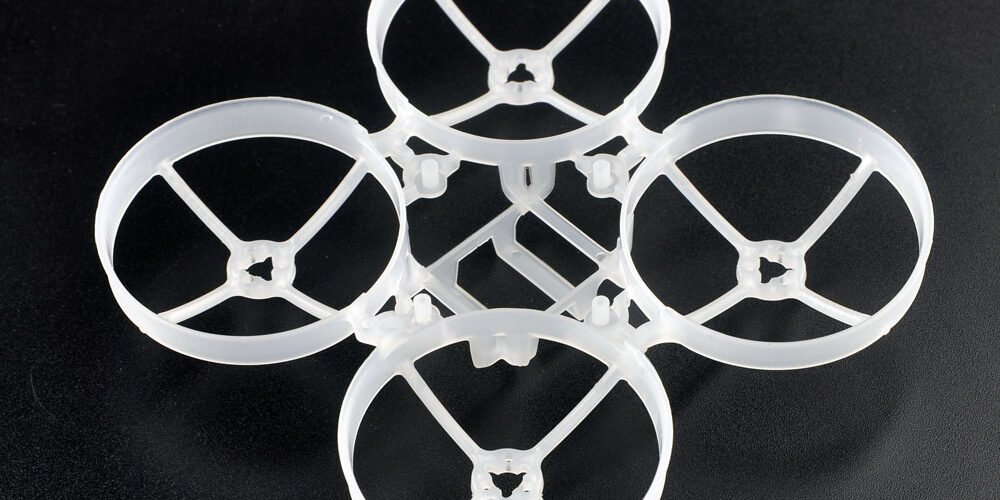The world of First-Person View (FPV) drones offers an unparalleled sense of freedom and exhilaration, allowing pilots to experience flight from the perspective of the drone itself. Unlike traditional camera drones, FPV flying is all about immersive control, acrobatic maneuvers, and high-speed thrills. While it might seem daunting at first, significant advancements in technology have made FPV more accessible than ever for newcomers.
If you’re ready to dive into this exciting hobby, choosing the right starter kit is crucial. A good beginner FPV drone should be durable, easy to set up, and provide a forgiving learning curve. Whether you’re looking to race through gates, perform acrobatic flips, or simply explore your surroundings from a new vantage point, there’s a perfect entry-level FPV drone for you. For those just getting started with drones in general, you might also find our comprehensive guide on best drones for beginners incredibly helpful.
In this roundup, we’ve meticulously selected the top 4 FPV drones that are ideal for new pilots, offering a blend of performance, durability, and ease of use to get you airborne quickly and confidently. Let’s take a closer look.
1. Betafpv Cetus X FPV Kit – Our Top Pick

The Betafpv Cetus X FPV Kit stands out as our top recommendation for new pilots primarily because of its comprehensive nature and thoughtful design tailored for learning. This isn’t just a drone; it’s a complete ecosystem that includes the drone, a radio transmitter, and FPV goggles, all pre-bound and ready to fly. The Cetus X drone itself is a versatile quadcopter, capable of both stable flight for beginners and more aggressive freestyle maneuvers as skills improve. Its robust frame can withstand countless crashes, an inevitable part of the FPV learning process, making it an excellent investment for durable fun. This kit often comes with access to FPV simulators, bridging the gap between virtual practice and real-world flying, which is invaluable for a beginner.
Pros
- Complete Ready-To-Fly (RTF) Kit: Everything you need to start flying is included and pre-configured.
- Excellent Durability: Built to withstand crashes, which is essential for new pilots.
- Multiple Flight Modes: Offers stabilized modes for beginners and acro mode for advanced learning.
- Simulator Compatibility: Often bundled with simulator access, aiding skill development without risk.
- Good Power-to-Weight Ratio: Provides enough punch for both indoor and outdoor flying.
Cons
- Proprietary Battery System: Requires specific Betafpv batteries, limiting flexibility.
- Goggles are Entry-Level: While functional, the included goggles are basic compared to higher-end options.
2. EMAX Tinyhawk III Plus Freestyle RTF Kit – Best for Progression

The EMAX Tinyhawk series has long been a favorite in the FPV community, and the Tinyhawk III Plus Freestyle RTF Kit continues that legacy by offering an exceptional platform for beginners eager to progress into freestyle flying. This kit, like the Cetus X, comes complete with a drone, radio, and goggles, ensuring a seamless out-of-the-box experience. What sets the Tinyhawk III Plus apart is its remarkable balance of small size and robust performance, making it perfect for both indoor exploration and learning basic outdoor acrobatics. Its durable frame and prop guards are designed to absorb impacts, which is crucial for pilots still mastering control. The flight characteristics are forgiving enough for initial learning but responsive enough to allow for genuine skill development, making it an excellent choice for those who want a drone that can grow with them.
Pros
- Excellent Durability: Known for being incredibly tough and able to withstand frequent crashes.
- Balanced Performance: Offers a great mix of power and control for learning freestyle tricks.
- Compact and Lightweight: Ideal for indoor flying and less intimidating for new users.
- Responsive Controls: Provides a direct feel, helping pilots develop precise stick control.
- Comprehensive RTF Kit: All essential components are included and ready for use.
Cons
- Battery Life Can Be Short: Typical for this size of drone, often requiring multiple batteries.
- Goggles are Basic: Functional for FPV, but image quality is entry-level.
3. GEPRC TinyGO 4K FPV Whoop RTF – Best for Cinematic Beginners

The GEPRC TinyGO 4K FPV Whoop RTF distinguishes itself from other beginner kits by integrating a 4K camera, a feature rarely seen in entry-level FPV drones. This makes it an excellent choice for new pilots who are not only interested in the thrill of FPV flying but also want to capture high-quality cinematic footage right from the start. As a „whoop” style drone, it features ducted propellers, making it inherently safer for indoor flying around people and objects, while also protecting the props from minor collisions. The TinyGO 4K comes as a complete RTF kit, offering the convenience of a pre-configured setup. While it excels at smooth, flowing cinematic shots, it’s also agile enough for learning basic FPV maneuvers, providing a well-rounded experience for those with a creative inclination.
Pros
- Integrated 4K Camera: Unique for a beginner FPV kit, allowing for high-resolution video capture.
- Ducted Propellers: Enhanced safety for indoor flying and propeller protection.
- Ready-to-Fly Package: Includes drone, transmitter, and goggles for immediate use.
- Stable Flight Characteristics: Good for learning precise control and smooth cinematic movements.
- Durable Construction: Designed to absorb impacts and protect internal components.
Cons
- More Expensive: The 4K camera adds to the overall cost, making it a pricier entry point.
- Requires SD Card: To utilize the 4K recording, an additional micro SD card is needed.
4. Happymodel Mobula7 ELRS 1S Whoop – Best Ultra-Compact Performer

The Happymodel Mobula7 ELRS 1S Whoop is a legendary micro FPV drone, renowned for its incredible performance in a tiny package. While often sold as a drone only (without a full RTF kit), its inclusion in this list is due to its popularity as an excellent second drone for beginners once they’ve acquired a compatible radio and goggles, or for those who prefer to piece together their own setup. The Mobula7 excels in indoor environments, zipping through tight spaces with remarkable agility and responsiveness. Its lightweight design combined with the efficient 1S battery system provides a surprising amount of power and decent flight times for its size. The ELRS (ExpressLRS) radio link is a significant advantage, offering superior range and reliability compared to older protocols, which translates to a more confident flying experience. For new pilots prioritizing pure indoor fun and compact performance, the Mobula7 is a fantastic choice, even if it requires a bit more initial setup research.
Pros
- Exceptional Indoor Performance: Agile and powerful enough for tight spaces and tricks.
- Lightweight and Durable: Can take a beating despite its small size.
- ELRS Radio Protocol: Offers industry-leading range, reliability, and low latency.
- Great Value: Provides high performance at a relatively affordable price point for the drone itself.
- Versatile Flying: Suitable for both casual cruising and learning advanced maneuvers indoors.
Cons
- Typically Drone Only: Does not usually come as a complete RTF kit with goggles and transmitter.
- Small Size Can Be Challenging: Requires delicate stick inputs, might feel twitchy for absolute beginners.
- Requires Separate Gear: New pilots will need to purchase a compatible ELRS radio and FPV goggles separately.
How to Choose the Best FPV Drone for New Pilots
Stepping into the world of FPV can feel overwhelming with the myriad of choices available. To make an informed decision, consider these key factors that are especially important for beginners.
Ready-To-Fly (RTF) Kits vs. Bind-N-Fly (BNF)
For absolute beginners, an RTF (Ready-To-Fly) kit is almost always the best option. These kits include everything you need: the drone, a radio transmitter, and FPV goggles, all pre-bound and configured. This eliminates the headache of compatibility issues and complex setup procedures, allowing you to fly almost immediately. BNF (Bind-N-Fly) drones, on the other hand, only include the drone itself, requiring you to source your own compatible radio and goggles. While this offers more flexibility for experienced pilots, it’s not recommended for your first FPV purchase.
Durability and Repairability
Crashing is an inevitable part of learning FPV. Therefore, choosing a drone that can withstand frequent impacts is paramount. Look for models with robust frames, prop guards, and easily replaceable parts. Many beginner-friendly FPV drones are designed with durability in mind, using flexible plastics and accessible components. The ability to easily obtain spare parts and perform simple repairs yourself will save you money and keep you flying longer.
Flight Modes and Learning Curve
Most beginner FPV drones offer multiple flight modes. Start with a stabilized mode (often called „Angle” or „Horizon” mode), which uses the drone’s sensors to self-level, making it much easier to control. As you gain confidence, you can transition to Acro mode (or „Rate” mode), which gives you full manual control and is essential for performing advanced maneuvers. A drone that supports both modes allows for a natural progression of skills.
Simulators: Your Best Friend
Before taking to the skies, spending time on an FPV simulator is incredibly beneficial. Many RTF kits come with simulator access or are easily compatible with popular FPV simulators. Practicing on a simulator allows you to develop muscle memory and learn control inputs without the risk of damaging your drone. It’s a low-cost, high-reward way to accelerate your learning process and build confidence.
Our Final Thoughts
Embarking on your FPV journey is an exciting step into a dynamic and rewarding hobby. The drones featured in this guide, particularly the Betafpv Cetus X and EMAX Tinyhawk III Plus, represent excellent starting points, offering complete packages that minimize initial frustration and maximize learning potential. The GEPRC TinyGO provides a great option for those prioritizing video quality, while the Mobula7 is a stellar performer for indoor acrobatics once you have the ancillary gear.
Remember that patience and persistence are key. Start with simulator practice, fly in safe, open environments, and don’t be discouraged by crashes. With the right beginner FPV drone, you’ll be soaring through the air with a newfound perspective in no time, mastering the art of first-person flight.



